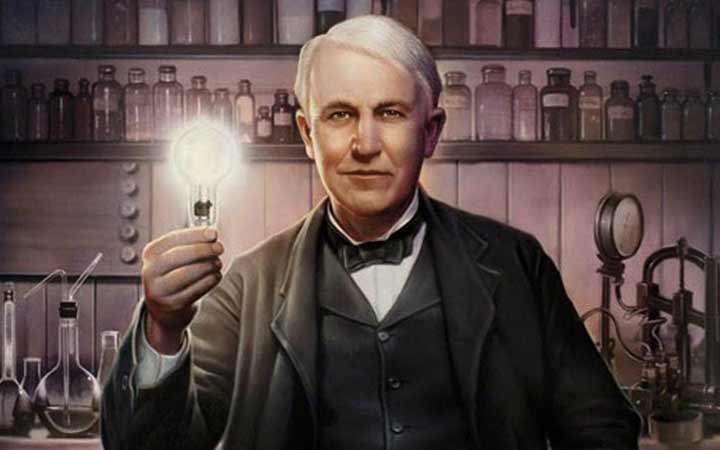Wednesday, January 12, 2022
Thursday, December 30, 2021
WHAT IS A HORMONE? - ฮอร์โมนคืออะไร
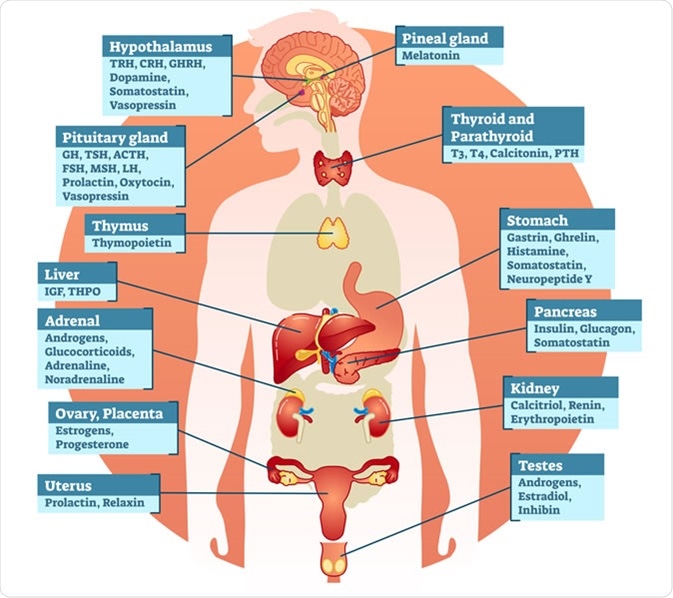 |
| WHAT IS A HORMONE? ฮอร์โมนคืออะไร www.news-medical.net |
- The thyroid gland, located in the neck, produces a hormone which helps in the growth, development, and metabolic processes of the body.
ต่อมไทรอยด์ (thyroid gland - noun - ไธ'รอยด์ แกรนด์) ซึ่งอยู่ที่คอจะผลิตฮอร์โมนซึ่งช่วยในการเจริญเติบโต พัฒนา และกระบวนการเผาผลาญของร่างกาย.
- The pituitary gland, located at the base of the skull, has two parts. As we know, one hormone produced by one part of this gland has the job of promoting growth. Another part of the pituitary gland produces two hormones which help control our use of water, fat, our blood pressure, and the way we regulate the heat in our body.
ต่อมใต้สมอง (pituitary gland - noun - พิทู'อิเทอรี แกรนด์) ซึ่งอยู่ที่ฐานของกะโหลกศีรษะมีสองส่วน จากที่เราทราบ ฮอร์โมนชนิดหนึ่งถูกผลิตโดยส่วนแรกของต่อมนี้มีหน้าที่ช่วยในการเจริญเติบโตของร่างกาย อีกส่วนหนึ่งของต่อมใต้สมองผลิตฮอร์โมน 2 ชนิด ซึ่งช่วยควบคุมการใช้น้ำ ไขมัน ควบคุมความดันโลหิต และวิธีที่เราควบคุมความร้อนในร่างกาย
- There are two important glands located at the upper end of each kidney. One produces a hormone called adrenalin. This hormone is related to blood pressure and reactions to emotion and emergencies. When you become excited or frightened, you produce more of this hormone.
มีต่อมสำคัญสองต่อมอยู่ที่ปลายบนทั้งสองข้างของไต (kidney - noun - คิดนิ) ต่อมแรกผลิตฮอร์โมนที่เรียกว่าอะดรีนาลิน ฮอร์โมนนี้เกี่ยวข้องกับความดันโลหิตและปฏิกิริยาต่ออารมณ์และภาวะฉุกเฉิน เมื่อคุณตื่นเต้นหรือตกใจ คุณจะผลิตฮอร์โมนนี้มากขึ้น
- Other glands in the body produce hormones which have to do with making you act like a boy or a girl.
ต่อมอื่นๆ ในร่างกายผลิตฮอร์โมนที่ทำให้คุณมีลักษณะท่าทางเป็นชายหรือหญิง
Tuesday, December 28, 2021
เกร็ดความรู้ภาษาอังกฤษ ตอน History of Technology ประวัติศาตร์เทคโนโลยี่
 |
| ประวัติศาตร์เทคโนโลยี่- Evolution of Technology |
| slideserve.com |
สวัสดีครับ วันนี้อยากนำเสนอเกร็ดความรู้ภาษาอังกฤษ เกี่ยวกับความเป็นมาของ เทคโนโลยี่ซึ่งต้องย้อนไปเมื่อ 3.3 ล้านปีมาแล้ว เทคโนโลยี่มีวิวัฒนาการมาเป็นเวลายาวนานซึ้งน่าศึกษาน่าเรียนรู้มาก มาเรียนรู้ภาษาอังกฤษและเกร็ดความรู้ในตอนที่มีชื่อว่า History of Technology (ฮิสทริ อัฟ เทคนอลโลจี) ประวัติศาตร์เทคโนโลยี่ ไปด้วยกันครับ สามารถดูต้นฉบับได้ที่ https://www.britannica.com/story/history-of-technology-timeline
 |
| History of Technology - The first tools wikimedia.org |
 |
| History of Technology - First Fire miro.medium.com |
 |
| History of Technology - Neolithic Revolution wp.com |
 |
| History of Technology - Irrigation www.irrigationaustralia.com.au |
| History of Technology - Sailing greenarea.me |
 |
| History of Technology - Iron cloudfront.net |
 |
| history of technology - windmill wikimedia.org |
 |
| History of Technology - First Compass nationalmaglab.org |
 |
| history of technology - mechanical clock นาฬิการไขลาน pinimg.com |
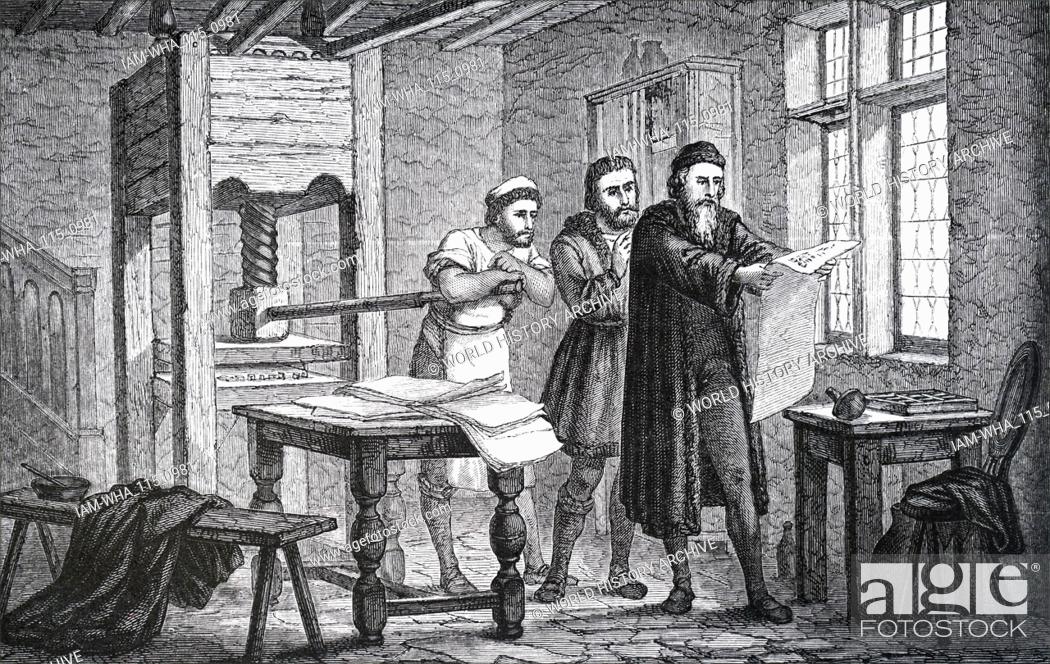 |
| History of Technology - Printing agefotostock.com |
 |
| history of technology - steam engine gettyimages.com |
:max_bytes(150000):strip_icc():format(webp)/first-photograph-2673939-5b0840770e23d90036127dd6.jpg) |
| history of technology - first known photograph www.thoughtco.com |
:max_bytes(150000):strip_icc():format(webp)/McCormick-Reaper-litho-3000-3x2gty-56a48a245f9b58b7d0d77177.jpg) |
| history of technology - reaper www.thoughtco.com |
 |
| history of technology - telegraph allaboutcircuits.com |
.jpg) |
| history of technology - telephone wikimedia.org |
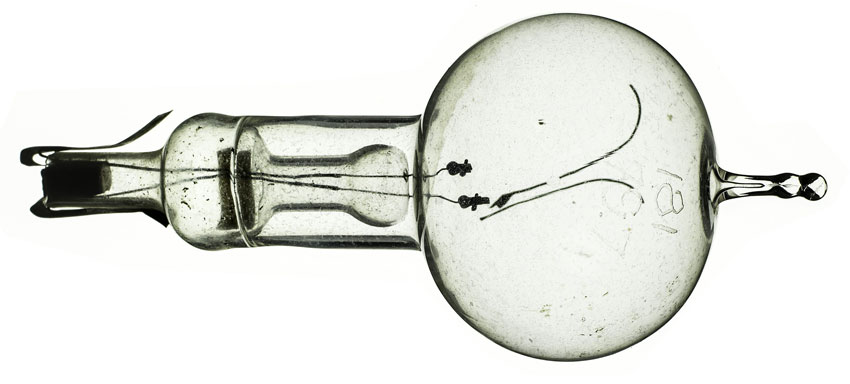 |
| history of technology - electric light www.bulbs.com |
 |
| history of technology - first automobile www.daimler.com |
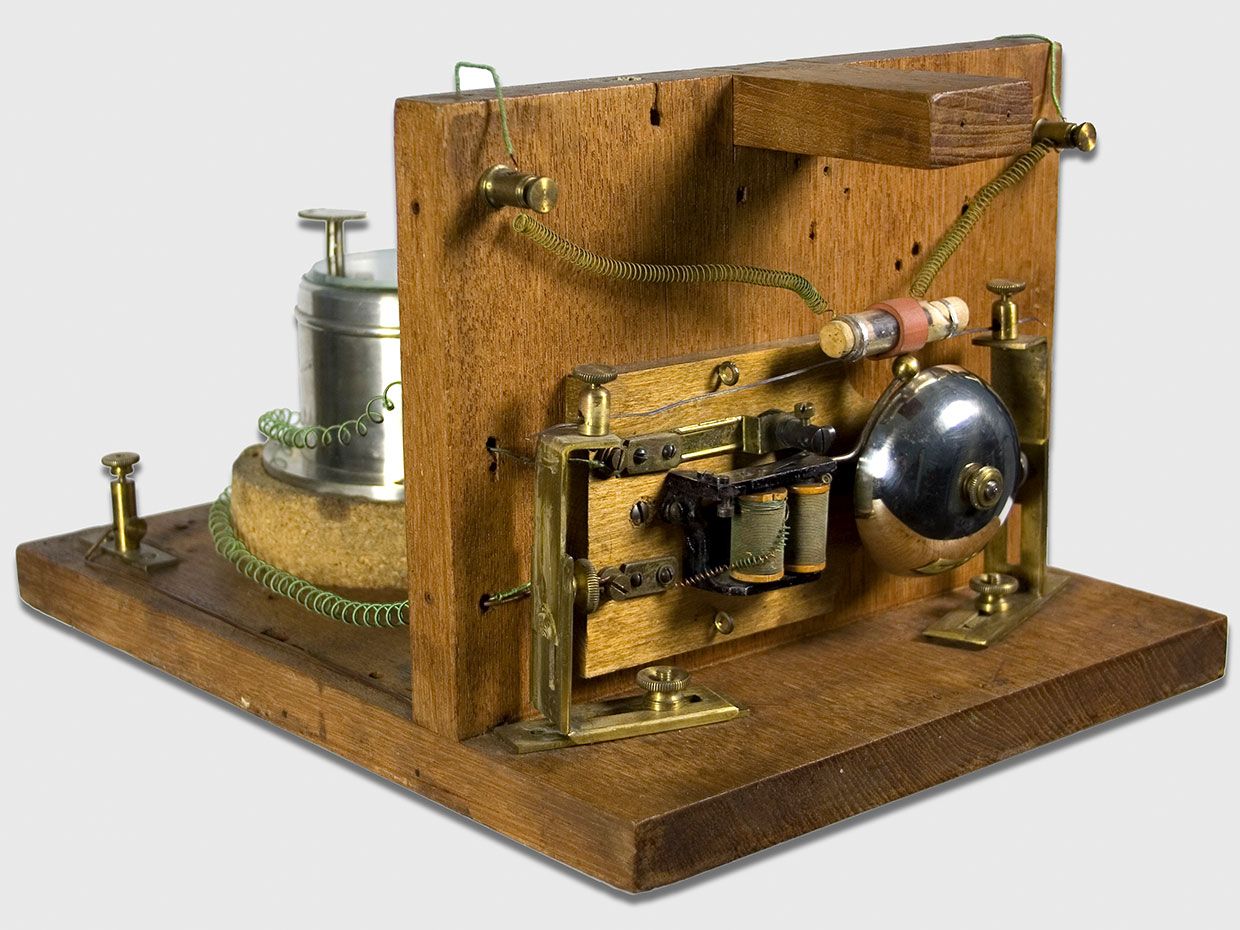 |
| history of technology - radio spectrum.ieee.org |
 |
| history of technology - airplane airandspace.si.edu |
 |
| history of technology - rocketry www.nasa.gov |
 |
| History of Technology - Transistor wikimedia.org |
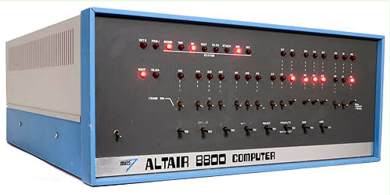 |
| History of Technology - Personal Computer Altair www.i-programmer.info |
 |
| History of Technology - Internet amazonaws.com |
Read more at:
- https://www.britannica.com/story/history-of-technology-timeline
- https://cropforlife.com/neolithic-revolution-also-called-the-agricultural-revolution/
- https://www.irrigationaustralia.com.au/about-us/the-history-of-irrigation
- http://www.waterencyclopedia.com/Hy-La/Irrigation-Systems-Ancient.html
- https://newsroom.posco.com/en/the-iron-age-of-civilization/
Saturday, April 17, 2021
Learn English from Quote of the Day - เรียนภาษาอังกฤษจาก คำคม EP.1
The longer you wait for something,
the more you'll appreciate it when you get it.
Because anything worth having is definitely worth waiting.
ยิ่งคุณรอสิ่งไหนนานเท่าใหร่
เมื่อคุณได้รับสิ่งนั้นมา คุณจะยิ่งรู้สึกเห็นคุณค่ามันมากขึ้นเท่านั้น
เพราะว่าอะไรก็ตามที่มีคุณค่า ย่อมคุ้มค่าแก่การรอคอยอย่างแน่นอน
worth
see more
Friday, April 16, 2021
Who made the first false teeth - ใครเป็นผู้สร้างฟันปลอมเป็นคนแรก
 |
| false teeth - cloudfront.net |
WHO MADE THE FIRST FALSE TEETH? ใครเป็นผู้สร้างฟันปลอมเป็นคนแรก
วันนี้หัวข้อ เกร็ดความรู้ภาษาอังกฤษ จะนำเสนอเกี่ยวกับเรื่องฟันปลอม ผมเชื่อว่าทุกคนคงรู้จักฟันปลอมดี แต่คงมีไม่กี่คนที่รู้ว่าความเป็นมาของฟันปลอม ไปดูกันครับว่าฟันปลอมมีมาตั้งแต่เมื่อใหร่ พร้อมกับเรียนภาษาอังกฤษไปพร้อมกัน
Nobody looks good when he has some teeth missing. Besides, it sometimes interferes very seriously with eating and chewing. So man decided long ago that when he lost his natural teeth for one reason or another, they should be replaced. Substituting artificial replacements for natural parts in teeth is called "prosthetics."
ไม่มีใครที่จะมองดูดีเมื่อปราศจากฟันบางซี่ไป นอกจากนั้นก็จะมีปัญหาเป็นอย่างมากกับการกินและการเคี้ยว ดังนั้นคนเราได้คิดหาสิ่งทดแทนฟันแท้เมื่อมันหลุดไปได้ตั้งนานมาแล้ว การทำฟันเทียมที่จะมาแทนฟันแท้เรียกว่า prosthetics (พลอสเธติคส์ -noun - อวัยวะเทียม)
When the natural teeth are gone, they are replaced either by bridgework or by dentures. In bridgework, the "load" of false teeth is borne natural teeth on either side of the gap. The bridge fits on these natural teeth. In a denture, the false teeth are held in place by resting on the gum and other parts of the mouth under the gum.
เมื่อสูญเสียฟันแท้ไป ก็จะถูกแทนที่ด้วยฟันปลอมแบบ สะพานฟัน (bridgework - noun -บริดจ์เวิร์ค ) หรือไม่ก็ ฟันปลอมแบบถอดได้ (dentures-noun- เดน'เชอะ) สะพานฟัน หรือ bridework ก็คือฟันปลอมติดแน่นที่ยึดอยู่กับฟันธรรมชาติที่อยู่ติดกับช่องว่างไรฟัน สะพานจะติดอยู่กับฟันแท้อย่างพอดี ฟันปลอมชนิดถอดได้ หรือ denture ฟันปลอมจะแทนทีอยู่บน เหงือก (gum - noun - กัม) และบนส่วนอื่นๆของปากใต้เหงือก
It may amaze you to learn that bridges with false teeth were made 3.000 years ago by the Etruscans, who worked with gold! Dentures, including "complete" dentures for people who had no teeth left, have been made for about 300 years. The first problems to be solved in making both bridges and dentures was how to make them stay in the mouth in the right position, and how to make the "baseplate material," the material that held the false teeth modern dentistry has solved both these problems so well that people with false teeth can eat and chew as well as anyone, and the false teeth feel light and natural in the mouth.
คุณว่ามันจะเป็นเรื่องที่น่าพิศวงไหมถ้าได้รู้ว่าฟันปลอมแบบสะพานฟันถูกสร้างมาเมื่อ 3,000 ปี ที่แล้วโดยชาวอีทรุสกันที่มีความรู้เกี่ยวกับการนำเอาทองมาใช้ ส่วนฟันปลอมที่ถอดได้ซึ่งก็รวมทั้งฟันปลอมทั้งปากสำหรับคนที่ไม่มีฟันแท้เหลือเลยก็ถูกสร้างมาเป็นเวลา 300 กว่าปีมาแล้ว ปัญหาแรกที่เจอและต้องหาทางแก้สำหรับการสร้างทั้งฟันปลอมทั้งแบบสะพานฟันและฟันปลอมแบบถอดได้ ก็คือทำอย่างไรมันจะอยู่ในปากได้อยากถูกที่ถูกทาง และวัสดุที่จะทำเป็นฐานจะทำจากอะไร ซึ้งวัสดุที่ว่านี้ทำหน้าที่ยึดฟันปลอมที่ทันตกรรมสมัยไหม่ได้แก้ปัญหาได้แล้วอย่างดีเพื่อให้ผู้ใส่ฟันปลอมใช้กินและเคี้ยวได้เหมือนคนทั่วไป อีกทั้งเบาและเป็นธรรมชาติเมื่ออยู่ในปาก
But what about the teeth themselves? In early times, false teeth were made from bone, ivory, and hippopotamus tooth! Sometimes the entire bridge or denture was carved from the same material, and it was all one piece that fitted into the mouth. Later on, individual human teeth, or the teeth of various animals, especially the sheep, were used. These were mounted on a gold or ivory base.
แล้วปัญหาเรื่องฟันเล่า ในอดีต ฟันปลอมทำมาจากกระดูก งาช้างและฟันของฮิปโปโปเตมัส บางครั้งสะพานฟันทั้งอันหรือฟันปลอมแบบถอดได้ถูกแกะ (carve - noun - คาร์ฟว - แกะสลัก) จากวัสดุเดียวกันและเป็นชิ้นๆเดียวกัน ที่ต้องใส่เข้าพอดีกับช่องปาก ในเวลาต่อมาฟันของคนหรือฟันของสัตว์ โดยเฉพาะฟันของแกะก็ถูกนำมาใช้ ซึ่งก็ถูกติดเข้ากับฐานที่เป็นทองหรืองาช้าง
At the end of the 18th century, teeth were made of porcelain, and soon individual porcelain teeth were mounted on gold or platinum bases. The materials in making teeth are the same as those used in making other fine porcelain. They have a fine texture, are somewhat translucent, and have great strength.
ในศตวรรษที่ 18 ฟันทำมาจากเซรามิก และไม่นานฟันปลอมที่ทำจากเซรามิกก็ถูกติดเข้ากับฐานฟันที่เป็นทองหรือทองคำขาว วัสดุที่นำไปทำฟันปลอมก็เป็นวัสดุเดียวกันกับที่นำไปทำเครื่องลายคราม ซึ่งมีเนื้อละเอียด ค่อนข้างโปร่งแสง และแข็งแรง
About 100 years ago false teeth began to be designed to harmonize with the shape of the face. Today, false teeth are matched to natural teeth so closely in color and shape that it is hard to tell them apart!
ประมาณ 100 กว่าปีก่อน ฟันปลอมถูกออกแบบให้เข้ากับรูปหน้าของเรา ทุกวันนี้ฟันปลอมก็ดูเหมือนกับฟันแท้ราวกับแกะทั้งสีและรูปทรง ซึ่งแยกไม่ออกเลยว่าอันใหนฟันจริงและอันใหนฟันปลอม
Vocabularies - คำศัพท์
- interfere - อินเทอเฟียร์' - verb - แทรกแซง
- replace - รีเพลซ - verb - แทนที ทดแทน
- hold in place - โฮลด์ อิน เพลซ - phrasal verb- แทนที
- gum - กัม - noun - เหงือก
- natural teeth - แนช'เชอเริล ทีธ - noun -ฟันแท้
- false teeth - ฟอลซ ทีธ - noun -ฟันปลอม ฟันเทียม
- bridgework - บริดจ์เวิร์ค - noun - สะพานฟัน คือ ฟันปลอมชนิดติดแน่น ไม่สามารถถอดเข้าถอดออกได้
- denture - เดน'เชอะ - noun - ฟันปลอมชนิดถอดออกได้
- prosthetics - พลอสเธติคส์ - noun - อวัยวะเทียม
- porcelain - พอร์ส'เลน - noun - เซรามิก
- design - ดิไซนฺ' - verb - ออกแบบ
- platinum - แพลท'ทะนัม - noun - ธาตุทองคำขาว
- mount - เมาน์ทฺ - verb - ติดเข้ากับ
- tell something apart - เทล ซัมธิง อะพาร์ท - phrasal verb - แยกออก
- harmonize - ฮาร์'โมไนซ - verb - กลมกลืนกัน เข้ากัน ประสานกัน
Reference:
http://www.dentistry.tu.ac.th/Dentistry/Page%20Knowledge/Text/25-3-57_1.pdf
Sunday, January 10, 2021
14 Sleep Mistakes You Didn't Know You Made

|
| 14 Sleep Mistakes You Didn't Know You Made |
-
Stop "watering" your body one hour before you hit the sack. Otherwise, you'll be bound to make one, or even a couple, of trips to the bathroom, which will rudely interrupt your sleep.
หยุดดื่มน้ำ 1 ชม ก่อนนอน ไม่เช่นนั้นคุณจะต้องตื่นขึ้นมาเข้าห้องน้ำ ครั้งหรืออาจจะหลายๆครั้ง ซึ่งนั่นจะเป็นการขัดจังหวะการนอนของคุณ - Avoid gimmicky alarm clocks that "shine bright like a diamond in the sky." To wake you up, an alarm clock needs to be loud, not bright. หลีกเลี่ยงการตั้งนาฬิกาปลุกแบบ มีแสงสว่างดุจดั่งแสงแห่งเพรชบนท้องฟ้า นาฬากาปลุกต้องมีเสียงที่ดังไม่ใช่มีความสว่าง
- It's a bad idea to eat right before going to bed, even if your dinner is light. Your body will still struggle to digest whatever you've fed it. Try not to eat anything 2 to 3 hours before bedtime.
เป็นความคิดที่แย่หากจะกินอาหารแล้วเข้านอนเลย ถึงแม้จะเป็นอาหารเย็นมื้อที่ไม่หนัก ร่างการคุณยังจะต้องพยายามอย่างหนักที่จะย่อยสิ่งที่คุณกินเข้าไป พยายามอย่ากินอะไรเลย 2-3 ชม ก่อนเวลาเข้านอน - Any rigorous physical activity late at night will negatively affect your sleep. Try to exercise at least 4 hours before going to bed.
กิจกรรมหนักๆต่างๆตอนดึกๆจะทำมีผลต่อการนอนของคุณ พยายามออกกำลังกาย ก่อนเวลาเข้านอนอย่างน้อย 4 ชม. - Napping is an entirely normal, and often healthy, routine. But if your naps are regular and last longer than half an hour, they can mess up your sleep at night.
การงีบหลับเป็นกิจวัตรประจำที่ปกติ และดีต่อสุขภาพ แต่ถ้าการงีบหลับของคุณเกิดขึ้นเป็นประจำและ(การงีบหลับ)นานกว่าครึ่งชั่วโมง นั่นจะทำมีผลที่ไม่ดีกับการนอนในตอนกลางคืนของคุณ - By buying a good, high-quality mattress, you literally invest in your bright (and healthy) future.
การซื้อฟูกที่ดีและมีคุณภาพสูง คุณได้ลงทุนให้กับอนาคตที่สดใสและมีสุขภาพดี - Thousands of people deal with stress and insomnia with the help of over-the-counter sleep aids. But it's not the best idea. Your body will most likely develop a tolerance to sleep medications; and pretty soon, they won't have any effect on you.
ผู้คนนับพันต้องจัดการกับความเคลียดและโรคนอนไม่หลับ โดยใช้ยา (over-the-counter sleep aids = sleeping pill ใน context นี้) แต่นั่นไม่ใช่ความคิดที่ดีเลย ส่วนใหญ่แล้ว (most likely) ร่างกายของคุณจะพัฒนาที่จะต่อต่านยานอนหลับ และในไม่ช้า ยานอนหลับจะไม่ได้ผล - If the book you're reading is interesting, it's next to impossible to put it aside. You're more likely to keep reading until you finish it at the expense of healthy rest.
ถ้าหนังสือที่คุณกำลังอ่านน่าสนใจ และอ่านแล้ววางไม่ลง มีโอกาสมากที่คุณจะอ่านจนจบ แลกมากับการที่ไม่ได้พักผ่อนที่พอเพียง - When it comes to sleep, it's crucial to have a routine and, even more importantly, stick to it. เวลาที่ต้องเข้านอน ต้องมีเวลาที่แน่นอนอย่างมากและสำคัญยิ่งที่ต้องให้ตรงตามเวลาที่กำหนดไว้
- You might be waking up with a sore back, red eyes, and a painful neck just because you haven't found the proper sleeping position yet!
คุณอาจจะตื่นขึ้นมาพร้อมกับการปวดหลัง เจ็บตา หรือเจ็บต้นคอ ถ้าหากยังหาท่านอนทีเหมาะสมไม่ได้ - The majority of people can't avoid thinking about work-related problems, to-do lists, and bills to pay before falling asleep. Unfortunately, these thoughts usually cause anxiety, which makes the quality of sleep way worse.
คนโดยส่วนใหญ่ไม่สามารถหลีกเลี่ยงการคิดถึงปัญหาการทำงาน เรื่องที่ต้องทำ รายการที่ต้องจ่าย เป็นที่น่าเสียดาบที่การคิดเหล่านี้เป็นที่มาของความวิตกกังวล (anxiety - noun - แองไซ'อิที) - If your feet tend to get cold at nighttime, remember to put on a pair of warm socks before going to bed.
เท้าของคุณมักจะเย็นในตอนดึก อย่าลืมที่จะสวมถุงเท้าทำให้เท้าอุ่นก่อนเข้านอน - Do NOT drink coffee after 7 PM. I agree, it may sound a bit too obvious, but then you tell yourself that one tiny cup of espresso won't hurt, and there it goes อย่าดื่มกาแฟหลังหนึ่งทุ่ม ผมว่าที่มันเป็นเหตุผลที่ค่อนข่างชัดเจน แต่แล้วคุณก็บอกตัวเองว่าอีกซักถ้วยคงไม่เป็นไร และนั้นแหละเป็นจุดเริ่มต้น
Wednesday, May 20, 2020
WHY DO WE PERSPIRE - อะไรเป็นสาเหตุที่ทำให้เราเหงื่อไหล
 |
| sweat - shutterstock.com |
ถ้ามองร่างกายคนเราว่าเป็นเตาหลอมแบบถาวร อาหารที่เรากินเข้าไปก็จะเป็นเชื้อเพลิง ซึ่งร่างกายก็นำไปเผาผลาญ ซึ่งในขั้นตอนนี้ (พลังงาน)ประมาณ 2,500 แคลอรี่ ถูกนำไปใช้ทุกๆวันในร่างกายของเรา
Suppose the temperature of the blood drops for some reason. The heating center goes to work and certain things begin to happen. Special glands give out more chemical substances to burn, the muscles and the liver use up more "fuel," and soon our internal temperature rises.
When a liquid evaporates, it takes away heat. For example, we feel cold after a bath because the water which remains in contact with our warm skin is evaporating rapidly and cooling us off. So perspiration is part of the process of cooling the body.
Perspiration is like a shower which washes the body from within. The fluid flows out through millions of tiny openings in the skin in the form of microscopic drops. And these tiny drops can evaporate quickly and cool the body quickly when necessary.
- chest pain (เชสท เพน) เจ็บหน้าอก
- dizziness (ดิซ'ซีเนิส) อารการวิงเวียนศรีษะ
- shortness of breath (ชอร์ทเนิท ออฟ เบรธ) หายติดขัด
- continued perspiration for an extended period of time without cause เหงื่อออกเป็นเวลานานมากโดยไม่มีสาเหตุ
